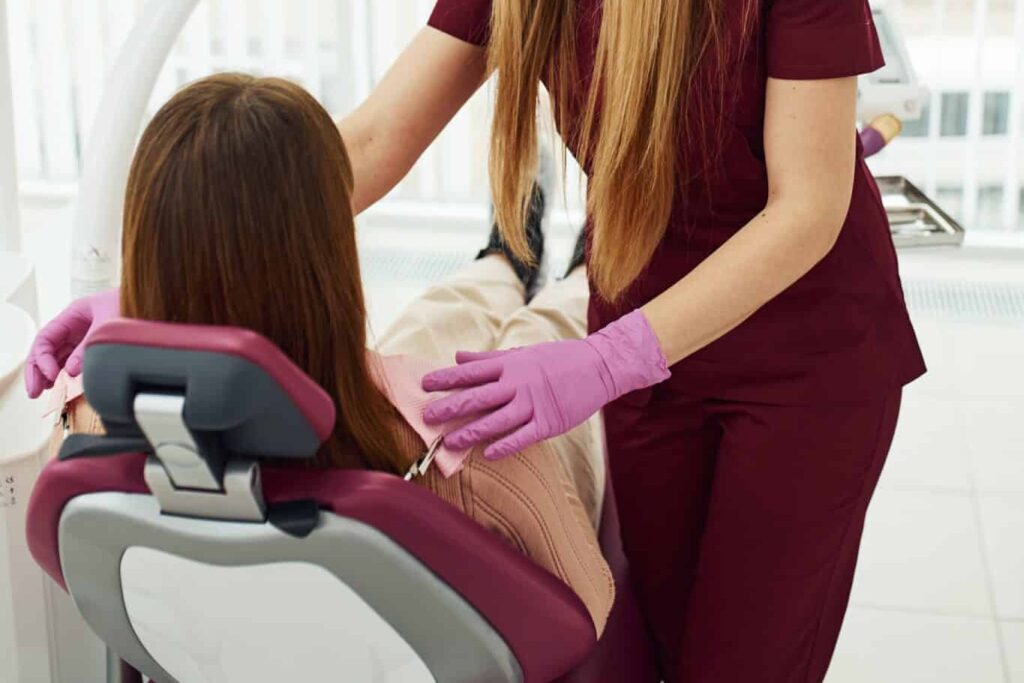Dental anxiety is a common concern that affects many individuals, often resulting in delayed or avoided dental treatment, compromising oral health and overall well-being. At Pickering Dental Services, our gentle family dental care approach prioritizes the comfort and satisfaction of our patients, which is why we offer sedation dentistry as a solution for those who suffer from dental anxiety. Creating a comfortable and relaxing environment for dental treatment, sedation dentistry helps patients overcome their fears, allowing them to receive the care they need to maintain their oral health.
Sedation dentistry encompasses a range of safe, effective, and customizable techniques to alleviate dental anxiety and ensure a comfortable experience for patients. These techniques can be used for a variety of dental procedures, ranging from routine check-ups and cleanings to more complex treatments like extractions and implant surgery. The ultimate goal of sedation dentistry is to create a relaxed and anxiety-free dental experience for patients, allowing them to receive the care they need without fear or discomfort.
In this post, we will delve into sedation dentistry, exploring its types, benefits, safety, and applicability to different dental procedures. Join us as we uncover how sedation dentistry can be of significant value to those who suffer from dental anxiety and learn how Pickering Dental Services can provide a safe, comfortable, and relaxing dental experience tailored to your individual needs.
Types of Sedation Dentistry
Sedation dentistry encompasses various techniques, allowing dental professionals to customize the sedation level to meet each patient’s unique needs. These techniques include the following:
1. Nitrous Oxide (Laughing Gas)
Nitrous oxide, commonly known as laughing gas, is a mild form of sedation that is inhaled through a mask placed over the nose. This type of sedation helps patients feel relaxed and at ease during dental procedures. The effects of nitrous oxide are quickly reversed once the gas is turned off, allowing patients to return to their daily activities with minimal downtime.
2. Oral Conscious Sedation
Oral conscious sedation involves taking a prescribed medication before the dental appointment, which induces a moderate level of sedation. Patients under oral conscious sedation remain awake but feel drowsy and relaxed throughout the procedure. It may take longer for the effects to wear off, requiring patients to arrange for transportation following their appointment.
3. IV Sedation
IV (intravenous) sedation is administered directly into the bloodstream, providing a deeper level of sedation than oral conscious sedation. Patients receiving IV sedation may feel groggy and have little to no memory of the procedure. This type of sedation requires close monitoring by dental professionals and a longer recovery time.
Benefits of Sedation Dentistry
Sedation dentistry offers several benefits, catering to a diverse range of patient needs:
1. Alleviates Dental Anxiety
One of the most significant benefits of sedation dentistry is its ability to alleviate dental anxiety, allowing patients to undergo necessary dental treatments without fear or stress.
2. Enhances Patient Comfort
Sedation dentistry helps create a more comfortable and relaxing experience for patients by reducing discomfort and sensory stimuli associated with dental procedures.
3. Allows for Multiple Procedures in a Single Visit
For patients requiring extensive dental work, sedation dentistry enables dental professionals to perform multiple treatments in a single visit, reducing the number of appointments required.
4. Improves Procedure Efficiency
Sedation dentistry allows patients to feel more relaxed and cooperative during treatment, making it easier and more efficient for dental professionals to complete the procedure.
Safety and Applicability of Sedation Dentistry
Sedation dentistry is considered safe and reliable, with trained dental professionals closely monitoring patients throughout the procedure. However, certain factors may impact whether sedation dentistry is appropriate for a specific patient:
1. Medical History
Patients with existing medical conditions, allergies, or taking certain medications may require additional evaluation before undergoing sedation dentistry to ensure its safety and effectiveness.
2. Level of Dental Anxiety
The level of sedation used during dental procedures depends on the patient’s level of dental anxiety and the nature of the treatment. A thorough assessment of each patient’s needs helps dental professionals determine the most suitable sedation technique.
3. Type of Dental Procedure
While sedation dentistry is beneficial for patients experiencing dental anxiety, some procedures may be completed without sedation for those with minimal anxiety. Your dental professional will guide you through the most appropriate options based on your specific circumstances and treatment needs.
How to Prepare for Sedation Dentistry
Preparing for sedation dentistry involves taking necessary precautions to ensure that the procedure is safe and effective. Here are some tips on how to prepare for sedation dentistry:
1. Consult with Your Dental Professional
Consult with your dental professional about your dental anxiety, medical history, and the type of sedation that is best suited for you. Your dental professional will provide detailed instructions on how to prepare for the procedure, including guidelines on eating and drinking, medication use, and transportation arrangements.
2. Follow Pre-Procedure Instructions
Follow all pre-procedure instructions provided by your dental professional, which may include abstaining from eating or drinking for a specific period before the procedure. Failure to follow these instructions may result in complications or the postponement of the procedure.
3. Arrange for Transportation
Arrange for someone to drive you home following the procedure, especially if you are receiving IV sedation or oral conscious sedation. Sedation can impair your judgment and motor skills, making it unsafe to drive or operate heavy machinery.
4. Wear Comfortable Clothing
Wear comfortable clothing for your dental appointment, avoiding tight-fitting clothes or jewelry that may interfere with the sedation or procedure.
5. Communicate with Your Dental Professional
Communicate any concerns or questions you may have with your dental professional, ensuring that you understand the procedure, risks, and benefits of sedation dentistry.
By following these preparation tips, patients can maximize the benefits of sedation dentistry while minimizing any potential risks or complications.
Conclusion
Sedation dentistry has become increasingly popular as a safe, comfortable, and anxiety-relieving option for dental treatment. At Pickering Dental Services, our gentle family dental care approach ensures that our patients receive personalized sedation techniques tailored to their unique needs, empowering them to address their dental concerns without fear or discomfort.
If you’re interested in learning more about sedation dentistry in Pickering or would like to schedule an appointment, please contact our caring and experienced team at Pickering Dental Services. We can create a comfortable and relaxing dental experience, helping you maintain a healthy, radiant smile that lasts a lifetime.



